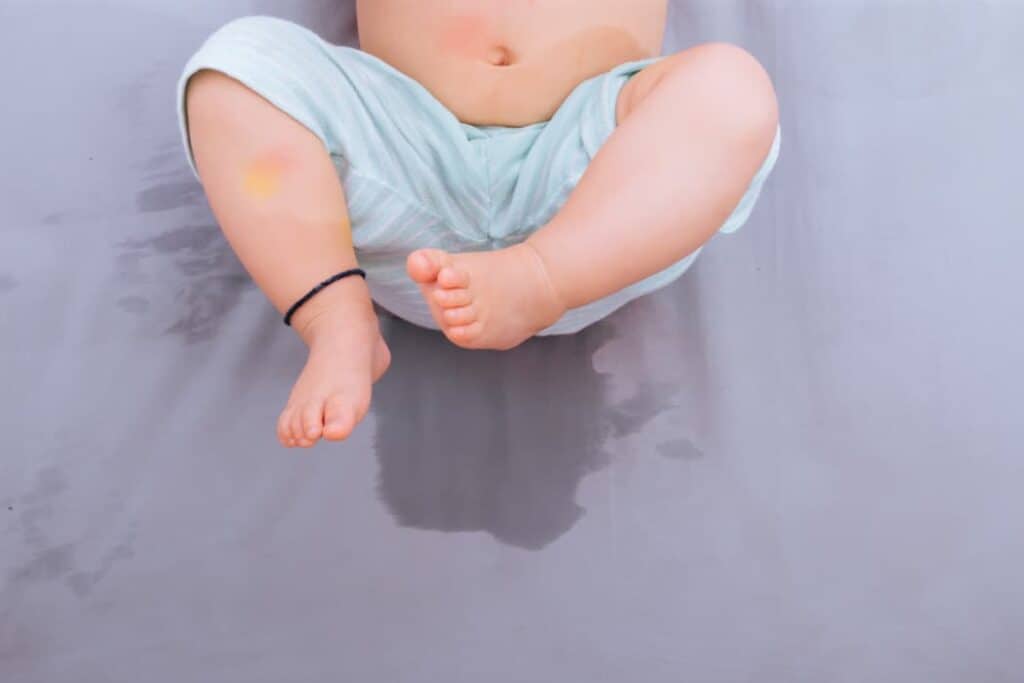As a new parent, one of the most challenging and frustrating experiences can be dealing with leaks and wet pajamas in the middle of the night.Your baby might be sleeping soundly, but the wetness could make them uncomfortable and disrupt their sleep. If you’re tired of waking up to change your baby’s wet diaper and dealing with the hassle of changing their clothes,keep reading. In this article,we’ll provide you with five practical tips to help prevent your baby from peeing through their diaper at night.
Super Absorbent Diapers: The Bedrock of Overnight Dryness
Overnight dryness is crucial for your baby’s comfort and sleep quality. Super absorbent diapers are essential for achieving this goal. They possess an remarkable capacity to absorb liquid, locking it away and keeping your baby’s skin dry all night long. Choose a diaper with multiple layers of super absorbent material that rapidly draws moisture away from your baby’s skin, ensuring a comfortable and undisturbed night’s sleep.
Perfect Fit: aligning Comfort with Leakage Prevention
Ensuring a snug yet comfortable fit is crucial in preventing nighttime diaper leaks. consider the following tips:
- Double-Check the Size: As your baby grows, their diaper needs may change. Regularly check their weight and adjust the diaper size accordingly.
- Adjust the Closures: Snug around the legs and waist is essential. Avoid leaving any gaps by tightening the closures securely but not too tightly.
- Layer Absorbency: For overnight use, consider adding an extra absorbent insert or using a diaper specifically designed for nighttime protection.
- Tip Up the Front: For boys,gently lift the front of the diaper to prevent leaks from the front.
- Prevent Roll-Overs: position the diaper to avoid any gaps between their waist and the diaper. Consider using diaper covers or sleep sacks with leg openings to prevent movement and leaks.
| Diaper Fit Checklist |
|—|—|
| Snug around legs and waist |
| closures not too tight or too loose |
| Absorbency appropriate for nighttime use |
| Front of diaper tipped up (for boys) |
| No gaps between waist and diaper |
Nocturnal Feedings and Wetting Woes: Exploring the Link
While nighttime feedings are crucial for a growing baby, they can also contribute to nighttime wetting accidents. The simple act of waking the baby to feed them can disrupt their sleep cycle and stimulate their kidneys, leading to increased urine production. Here’s a possible description for the connection:
• increased Kidney Activity: During sleep, the body releases the antidiuretic hormone (ADH), which helps concentrate urine and reduce nighttime urination. However, waking your baby for feedings can interfere with ADH production, resulting in more urine output.The combination of increased urine production and the baby’s immature bladder control can often lead to nighttime wetting accidents.
Strategic diaper Placement: Minimizing Escapes
Diaper placement plays a crucial role in overnight diaper success. For maximum absorbency, position the diaper high and snug across your baby’s waist, ensuring there are no gaps around the legs. Adjust the tabs firmly,but not too tightly to avoid discomfort. Once secured, gently spread the diaper to accommodate and distribute your baby’s nightly output. Not only will this ensure optimal absorption, but it will also create a comfortable sleep environment, reducing the likelihood of leaks and disturbances.
Future Outlook
As the day turns into night, let these five tips weave their magic around your precious slumbering baby. With each nocturnal hour, may their diaper remain a steadfast fortress, guarding against any unscheduled escapades. As the moon casts its silvery glow, may your little one rest soundly, enveloped in a cozy and pristine slumber, free from the worries of untimely wetness.


Leave a Reply